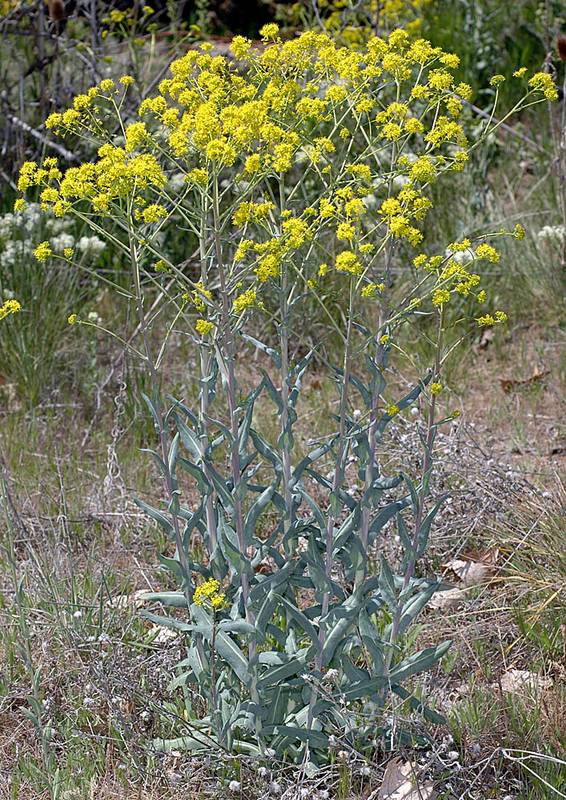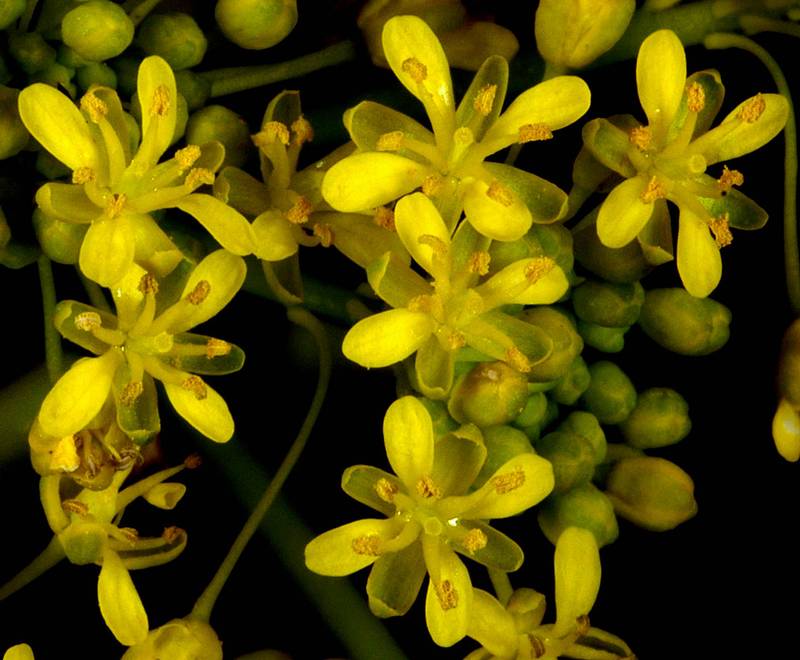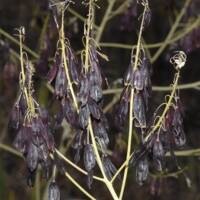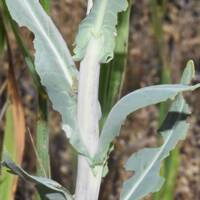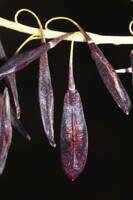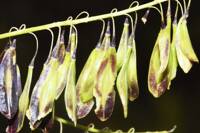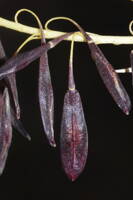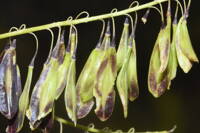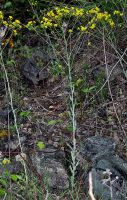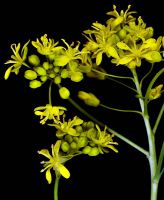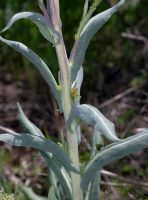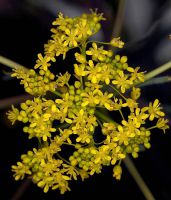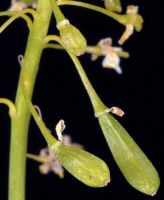Distribution: Known only from scattered locations in central Washington; British Columbia south to California, east to the Rocky Mountains; also occurring in parts of central and eastern North America.
Habitat: Disturbed dry ground, pastures, and roadsides, where often escaped from cultivation.
Flowers: April-June
Origin: Introduced from Eurasia
Growth Duration: Annual, Biennial, Perennial
Conservation Status: Not of concern
Pollination: Bees, flies, butterflies
Biennial or perennial, the one main stem 4-12 dm. tall, simple below but branched above, glabrous and glaucous.
Basal leaves several in a rosette, long-petiolate, oblanceolate, up to 18 cm. long, with a few, soft, unbranched hairs; cauline leaves lanceolate to elliptic, sessile and auriculate, entire and glabrous.
Racemes compound, numerous, bractless; pedicles slender, enlarged below the flower, reflexed, shorter than the fruits; sepals 4, not saccate at base; petals 4, yellow, spatulate, 3.5 mm. long; style lacking, the stigma sessile, bi-lobed.
Fruits oblong-oblanceolate, 12-18 mm. long, 5-7 mm. broad.
Publication: Sp. Pl. 2: 670. 1753.
PNW Herbaria: Specimen records of Isatis tinctoria in the Consortium of Pacific Northwest Herbaria database
WA Flora Checklist: Isatis tinctoria checklist entry
OregonFlora: Isatis tinctoria information
E-Flora BC: Isatis tinctoria atlas page
CalPhotos: Isatis tinctoria photos

